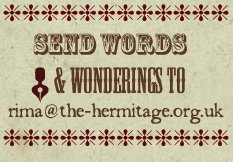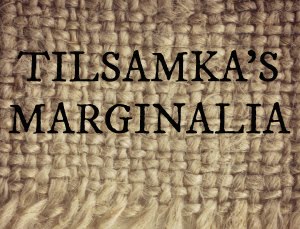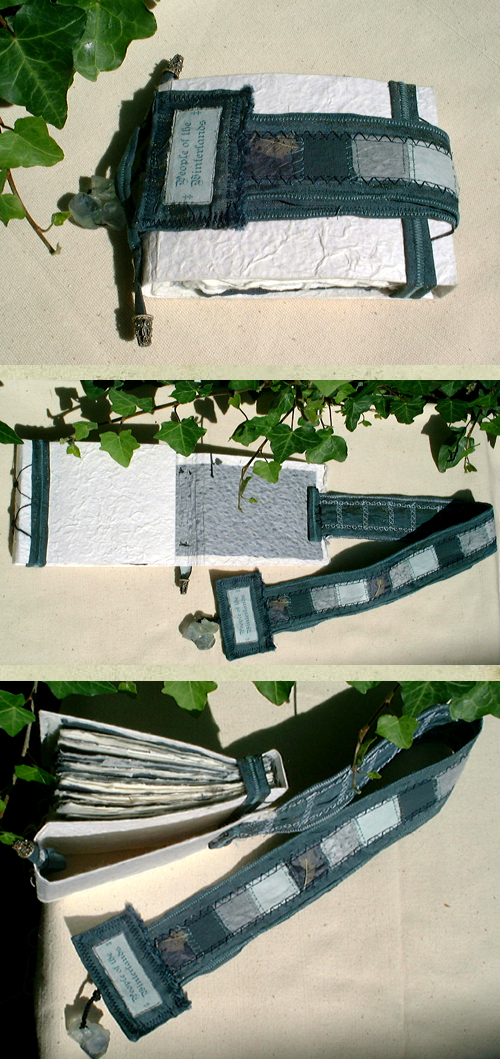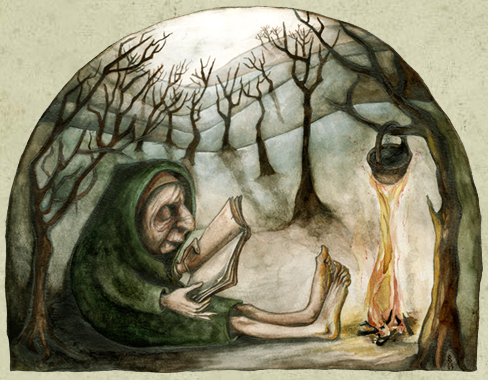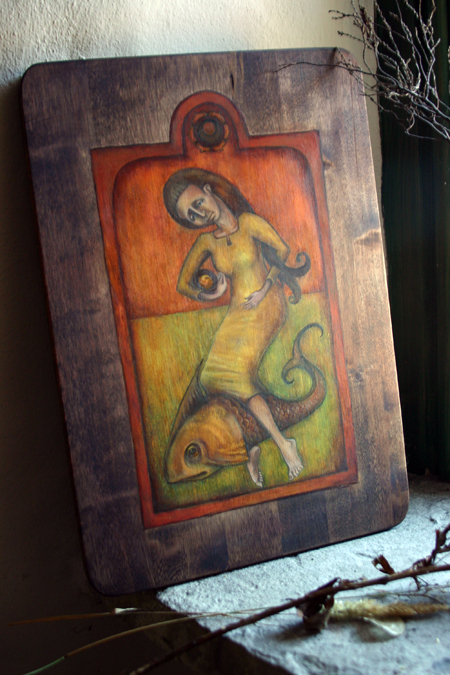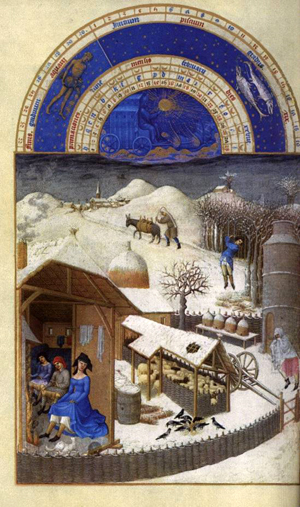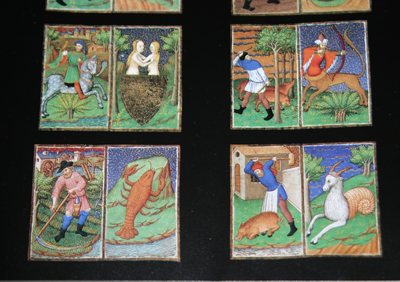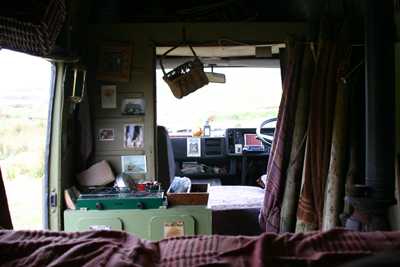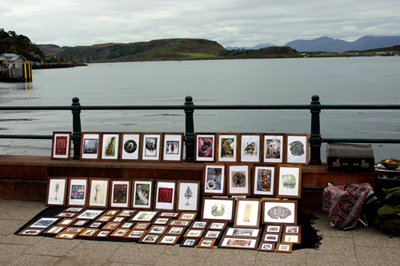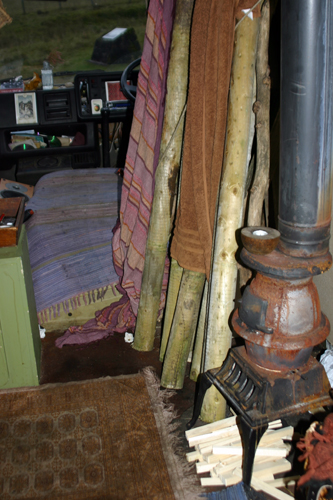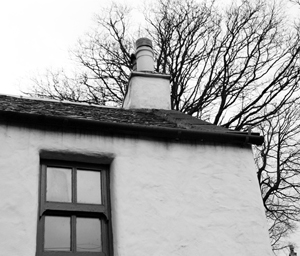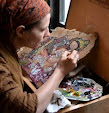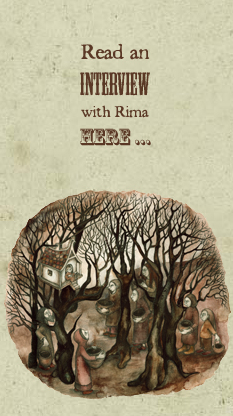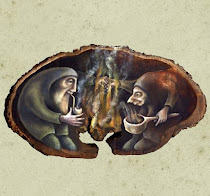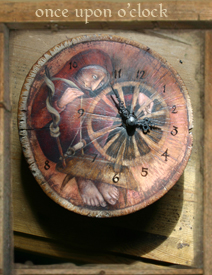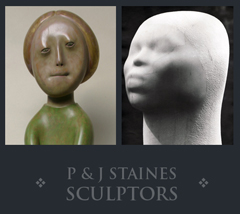IN KEEPING with the celebrations at this cold end of the year, for the next eight days I will be posting the text and imagery from a book I made entitled People of the Winterlands - a collection of folklore characters from wintry northern climates...
In ancient times the climates of the northern lands brought cold, hard winters and long, dark nights. In the midst of a frozen white landscape, the need to keep warm and find enough to eat was vital. It is therefore understandable that all cultures held winter celebrations to welcome back the warmth and light, in hopes that the frosts and snow would not last too long, and that spring would return the green once again to their lands. Nowadays, we celebrate Christmas at this time of year, but the date of the celebration of Christ’s birth was in fact altered by Pope Julius (AD 337–52) to December 25th deliberately to coincide with ancient popular pagan midwinter festivals. The Christian myth links in well with the theme, celebrating, as it does, the birth of the child of light and hope, conquering death.
In the days before central heating and electricity, the prospect of a harsh winter was frightening. To people who lived so close to the land and shaped their lives around its turning seasons, winter represented death – of root and field, and of livestock. It was recognised, though, that death and harsh frosts were necessary in order for life to spring up again once more, and for the wheel of the seasons and of life to continue turning. Indeed, the word Yule (the traditional name for this season, and specifically for December 21st – the midwinter solstice when the night is the longest of the year) probably derives from the Old Norse “iul” or the Anglo-Saxon “hweol” both meaning “wheel”.
Our Christmas derives from various traditions, including the raucous Roman “Saturnalia”, and Greek “Mithrasian” fire celebrations, but here in Northern Europe, it owes most to Yule – with its ritual fires, evergreen decorations and sparkling lights. Sacrifices were made to the old gods and goddesses to confirm the mystical moment of the sun’s rebirth. The church tactfully turned a blind eye to deeply enshrined pagan delights and long-established festivals and, in return, pagan joy in earthly pleasures came to warm the Church’s own austere feast. Christmas became merry, homely and appealing to simple humanity; a lovely child in human shape, welcomed and rocked in a cradle, whose birthday was celebrated in earthly style with feasting, lights, gifts and music, replaced the cool incarnate God of the early years. Many cheerful pagan aspects remain in our Christmas festivities, including the Christmas tree, Yule log, evergreens, candles, gifts and festive meals. These images mingle without much conflict with the more dominant Christian message, as after all, they have much in common – pleasure in family life and friendship, in hospitality and gift-giving, in warmth of heart and hearth, sparkling lights, greetings and goodwill.
Over recent years, however, Christmas has had all that was at its heart brutally commercialized. Plastic, neon and money seem to be all that Christmas is about nowadays, and the old pagan gods have been sanitised into the sickly-sweet American Santa Claus. We cannot appreciate the realities of a harsh and bitter winter, and the vital dark side of this ancient festival is therefore lost to us.
There are many folk figures and mythological pagan deities amongst the cultures of Northern Europe who are symbols of this winter season, or who protect the people from its severity. Winter spirits are the embodiment of the popular experience of winter in ancient days, and as such can be either benevolent or frightening. They can represent both the warmth of the hearth and the heart, and the bleak reality of death. These are the elements which have been removed from today’s commercial Christmas, and which I believe need to be honoured once more.
In this book are a just handful of the winter spirits, all gathered from Northern European folklore. You will find figures both male and female, both friendly and frightening. This small glimpse will, I hope, conjure for you an enchanting, icy winter landscape and a world of the “in-between” where animals speak, and where the spirit world is not far away, but where death is always just round the corner ...




